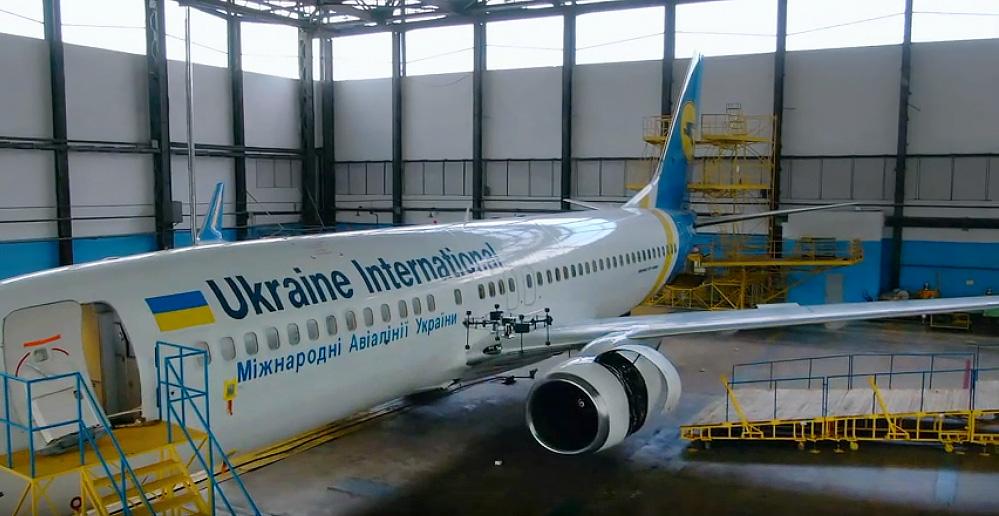
Ukraine International Airlines (UIA) and its MRO services provider MAUtechnic have begun trialing the use of Luftronix drones for aircraft inspections. The project, which began in late September, is expected to continue for a year as the airline and MRO test the technology’s ability to speed up aircraft inspections.
The drone-based scans are initially being conducted on UIA’s Boeing 737-800s in Kyiv, Ukraine and the companies eventually plan to use the technology to scan the airline’s entire fleet, which also consists of Boeing 737-900, 777-200ER, 767-300ER and Embraer 190/195 aircraft.
According to MUAtechnic, it hopes to reduce the turnaround time for a typical aircraft structure inspection by up to 50%. It also plans to use the technology in heavy maintenance to verify work that has been completed on an airframe and to compare before and after scans to determine whether repairs have been successful.
Luftronix president and CEO Klaus Sonnenleiter says the drone technology’s main benefits are speed and safety. “Not having to create access for humans at the higher elevations of the aircraft saves money, time and risk,” he notes. “In addition, our scan quality of 0.16mm GSD (distance between pixels) guarantees that any inspection-relevant artifact will be detected.”
Scans of UIA’s fleet are being conducted using Luftronix’s custom-built drones—which feature high-precision navigation systems and scanning equipment—and its Luftronix Orchestrator software for scan planning, flight operations and data analysis. According to Luftronix, its precise on-screen measurements allow inspectors to immediately assess whether artifacts are within specifications prescribed in the aircraft maintenance and structural repair manuals.
To increase safety, the drones carry multiple fall-back systems to ensure no single equipment failure can create a fatal in-flight accident. They also feature built-in emergency operations for various safety scenarios, so they can recover from unexpected events such as foreign objects moving into the flight path or ladders or ropes appearing where they were not expected.
“After years of working day and night to ensure safety and precision of our scanning equipment, we see our cooperation with MAUtechnic and UIA as a major milestone in introducing our technology to the aviation industry,” says Sonnenleiter. “We see this as a chance to preserve the result of each inspection, make them comparable and have inspections conducted much faster and much more efficiently than it was possible in the past.”
Based in New Jersey, Luftronix has been fine-tuning its capabilities for aviation since it was founded in 2016. UIA is its first official airline proof of concept, although the company has been in talks with other global operators as it seeks to secure pilot customers.
